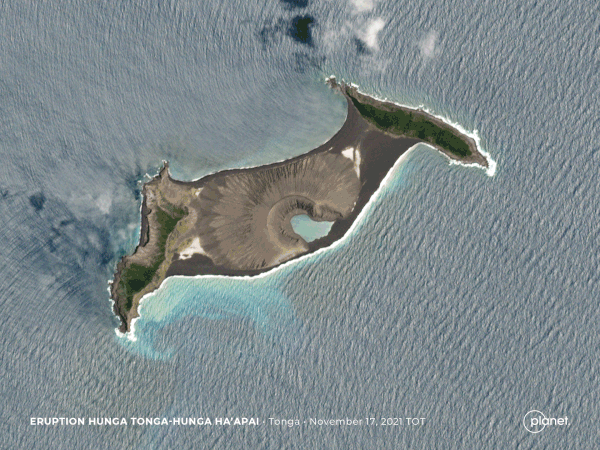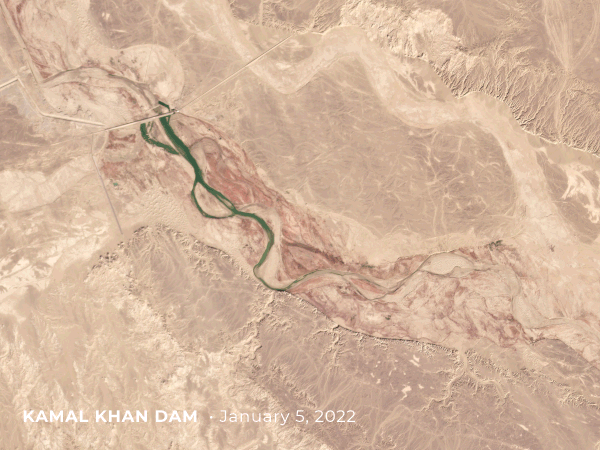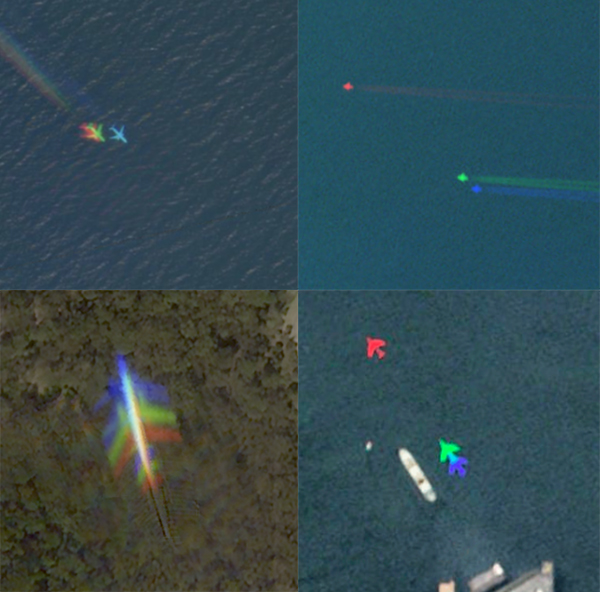Planet Snapshots
JANUARY 13, 2022
Issue #8
|
 |
|
SkySat image of Hunga Tonga-Hunga Ha’Apai on January 7, 2022.
|
|
In this week’s issue: A volcanic island erupts and expands, a desert reservoir fills up with rainfall, a flock of Doves hitches a ride on SpaceX’s Falcon 9, and planes appear in rainbow
colors.
|
|
|
|
|
FEATURED STORY
Volcanic Island
|
|
In early 2015, an underwater volcano in the South Pacific explosively erupted, forming a new island within the Polynesian nation of Tonga.
Scientists initially thought that the island would vanish within a matter of months, which is often the case for small volcanic islands due to the erosive power of ocean waves.
But seven years later, the island not only still stands—it has grown dramatically.
|
 |
|
PlanetScope images of Hunga Tonga-Hunga Ha’Apai before and after the eruption.
|
|
In late December, the island now named Hunga Tonga-Hunga Ha'apai began to erupt from a new volcanic vent.
Dan Slayback, a research scientist at NASA’s Goddard Space Flight Center in Maryland, has studied this island since its formation.
“[The eruption] destroyed a large section of the 120-meter tall tephra cone left by the last eruption, and completely filled its crater lake with new material,” Slayback says, based on analysis of Planet and other satellite data.
The change in the island’s appearance in only a matter of days is striking.
Note: The above is an excerpt from Dr.
Tanya Harrison’s Planet Pulse article.
Continue reading here!
|
 |
|
SkySat image of Hunga Tonga-Hunga Ha’Apai on January 7, 2022.
|
|
Also: Simon Proud at the National Centre for Earth Observation has been observing the volcano’s eruption via multiple satellites.
Take a look at the different angles and scenes on his Twitter thread.
|
|
|
|
Desert Reservoir
|
 |
|
PlanetScope images of the reservoir by Kamal Khan Dam filling up.
|
|
It’s not often you see a reservoir fill so much in just 3 days.
Floodwater reached the Kamal Khan Dam days after heavy rains fell on southern Afghanistan’s Helmand Province.
Satellite images show dramatic changes to the landscape submerged in water.
|
|
|
|
3… 2… 1… Liftoff
|
 |
|
SkySat image of Transporter-1 at SLC-40, Cape Canaveral, Florida on January 20, 2021.
|
|
Get the pancakes ready because it’s launch day! A flock of 44 Doves are scheduled to hitch a ride aboard SpaceX’s Falcon 9 Transporter-3 rocket this morning.
Depending on when you’re reading this—and if conditions were good for takeoff—Planet’s fleet just expanded to over 240 satellites in orbit.
The new flock will augment existing satellites, ensuring that we can continue to image the entire Earth every day and deliver the changes we observe to your inbox each week.
|
|
|
|
Satellite Explainer
Rainbow Planes
|
 |
|
PlanetScope and SkySat images of planes in motion.
|
|
When we image Earth, we usually photograph still-objects like terrain and structures.
But between the planet’s crust and our satellites are layers of objects in motion.
Planes, when caught in the frame, create a colorful pattern.
Our Dove satellites, for example, take three images of a scene in red, blue, and green and then combine them to create a full color image.
During the capturing sequence, however, fast-moving objects like planes change locations between each shot.
The result is a composite image in which the static parts appear normal but the plane is rendered as a succession of single-colored outlines.
|
|
|
|
|
|
|